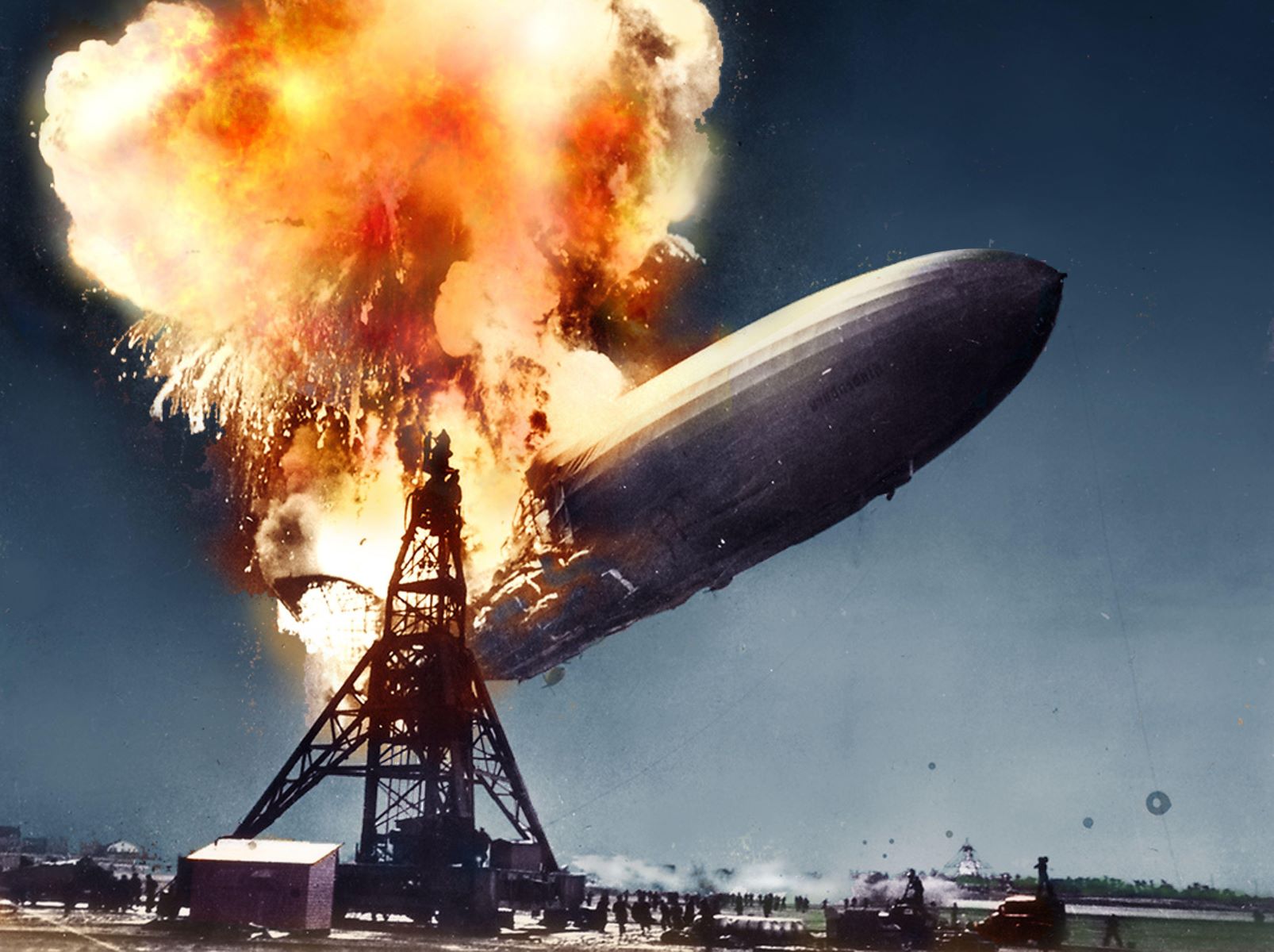
What caused the Hindenburg disaster? The Hindenburg disaster, a tragic event in aviation history, occurred on May 6, 1937. This German passenger airship, filled with hydrogen, caught fire while attempting to land in New Jersey. The exact cause remains debated, but many believe a combination of static electricity and a hydrogen leak ignited the blaze. Others suggest sabotage or a lightning strike. The disaster resulted in 36 fatalities and marked the end of the airship era. Understanding this event helps us appreciate advancements in aviation safety. Let's delve into 35 intriguing facts about the Hindenburg disaster, shedding light on its history and impact.
Key Takeaways:
- The Hindenburg disaster, caused by a combination of factors including the use of flammable hydrogen, led to the end of the airship era and stricter safety regulations in aviation.
- The tragic explosion of the Hindenburg highlighted the importance of using safe materials, rigorous safety testing, and considering weather conditions in aviation, leaving a lasting impact on air travel.
The Hindenburg: A Marvel of Engineering
The Hindenburg, a German passenger airship, was a symbol of technological advancement in the 1930s. Its tragic end, however, overshadowed its engineering marvel.
- The Hindenburg was the largest aircraft ever built, measuring 804 feet in length.
- It was filled with hydrogen, a highly flammable gas, instead of the safer helium due to export restrictions.
- The airship could carry up to 72 passengers and 61 crew members.
- It had a maximum speed of 84 miles per hour, making it one of the fastest airships of its time.
- The Hindenburg featured luxurious amenities, including a dining room, lounge, writing room, and even a smoking room.
The Fateful Journey
The Hindenburg's final flight was meant to be a routine transatlantic journey from Frankfurt, Germany, to Lakehurst, New Jersey. However, it ended in disaster.
- The Hindenburg departed from Frankfurt on May 3, 1937.
- It was scheduled to land in Lakehurst on May 6, 1937.
- The airship encountered strong headwinds, delaying its arrival by several hours.
- As it approached the landing site, the weather conditions were less than ideal, with thunderstorms in the area.
- The Hindenburg was attempting a high landing, where the airship would hover above the ground and drop mooring lines.
The Tragic Explosion
The Hindenburg disaster is one of the most infamous airship accidents in history. The explosion and fire that ensued were catastrophic.
- The explosion occurred at 7:25 PM on May 6, 1937.
- The fire started near the tail of the airship.
- Within 34 seconds, the entire airship was engulfed in flames.
- Of the 97 people on board, 36 passengers and 22 crew members survived.
- The disaster claimed the lives of 13 passengers, 22 crew members, and one worker on the ground.
Theories and Investigations
The cause of the Hindenburg disaster has been the subject of much speculation and investigation over the years.
- Initial investigations suggested that a spark ignited the hydrogen gas.
- Some theories propose that static electricity caused the spark.
- Others believe that a leak in one of the hydrogen cells was to blame.
- Sabotage was also considered a possible cause, though no evidence was found to support this theory.
- Modern investigations suggest that a combination of factors, including the airship's design and weather conditions, contributed to the disaster.
Impact on Airship Travel
The Hindenburg disaster had a profound impact on the future of airship travel and the aviation industry as a whole.
- The disaster marked the end of the airship era for passenger travel.
- Public confidence in airship safety plummeted after the incident.
- The use of hydrogen in airships was largely abandoned in favor of helium.
- The disaster led to stricter safety regulations for airships and other aircraft.
- The Hindenburg disaster remains a stark reminder of the potential dangers of air travel.
Cultural Legacy
The Hindenburg disaster has left a lasting legacy in popular culture, inspiring numerous books, films, and documentaries.
- The famous radio broadcast by Herbert Morrison, who reported live from the scene, captured the horror of the disaster.
- Morrison's emotional exclamation, "Oh, the humanity!" became iconic.
- The disaster has been depicted in several films, including the 1975 movie "The Hindenburg."
- Numerous documentaries have explored the events and theories surrounding the disaster.
- The Hindenburg disaster is often referenced in discussions about aviation safety and engineering failures.
Lessons Learned
The Hindenburg disaster taught valuable lessons about engineering, safety, and the importance of using appropriate materials in construction.
- The use of hydrogen, despite its flammability, was a critical mistake.
- Advances in materials science have since improved the safety of modern aircraft.
- The disaster highlighted the need for rigorous safety testing and protocols.
- It underscored the importance of weather considerations in aviation.
- The Hindenburg disaster remains a case study in engineering and safety courses worldwide.
The Legacy of the Hindenburg Disaster
The Hindenburg disaster remains one of history's most infamous airship tragedies. Its fiery end on May 6, 1937, marked the decline of airship travel and highlighted the dangers of hydrogen as a lifting gas. The event led to stricter safety regulations and a shift towards helium, which is non-flammable. Despite its tragic end, the Hindenburg's story is a testament to human ambition and the quest for innovation. It serves as a stark reminder of the importance of safety in technological advancements. The disaster also left a lasting impact on media coverage, as it was one of the first major events to be broadcast live, shaping how news is reported today. The Hindenburg's legacy continues to fascinate and educate, ensuring that the lessons learned from this tragedy are never forgotten.
Frequently Asked Questions
Was this page helpful?
Our commitment to delivering trustworthy and engaging content is at the heart of what we do. Each fact on our site is contributed by real users like you, bringing a wealth of diverse insights and information. To ensure the highest standards of accuracy and reliability, our dedicated editors meticulously review each submission. This process guarantees that the facts we share are not only fascinating but also credible. Trust in our commitment to quality and authenticity as you explore and learn with us.


